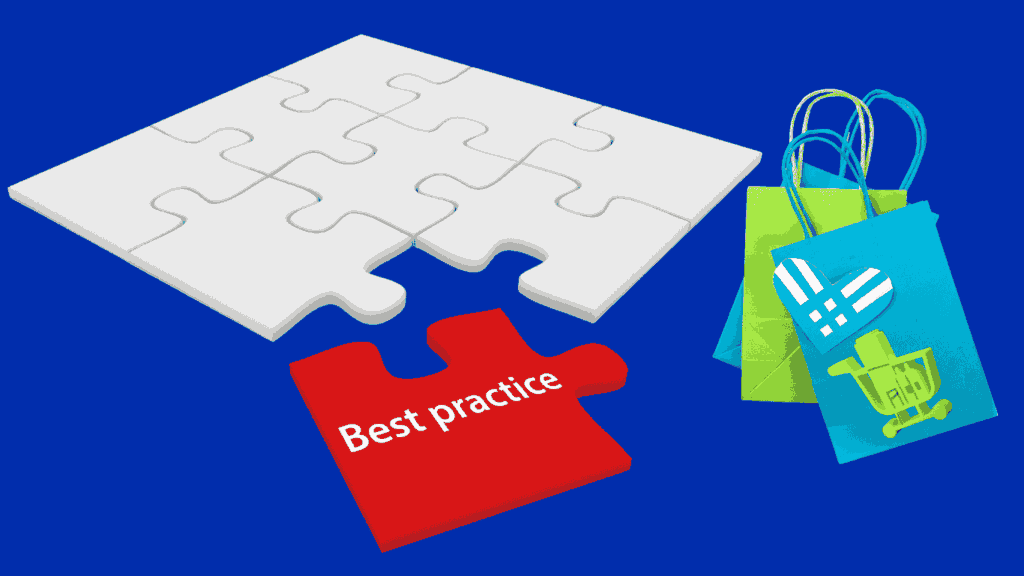In today’s competitive landscape, simply having a Shopify store is not enough. The businesses that succeed are the ones that treat e-Commerce not as a storefront, but as a strategic growth platform aligned with business KPIs like conversion rate, average order value (AOV), and customer lifetime value (CLV).
At Process Paramarsh, we see many companies investing heavily in marketing, only to lose customers to slow sites, friction-filled checkouts, and underutilized personalization. The good news? By applying proven best practices, companies can unlock measurable ROI and create experiences that scale from SMB to Shopify Plus enterprise levels.
Here are the 10 Shopify best practices every business should follow to boost conversions and revenue.

1. Prioritize Mobile-First and Global UX
Over 70% of Shopify traffic is mobile, and global shoppers expect frictionless experiences. Beyond responsive design, consider:
- Thumb-friendly navigation and one-click CTAs.
- Multi-currency and multi-language support.
- Testing layouts across regions and devices to ensure global accessibility.
2. Engineer for Performance, Not Just Aesthetics
A slow site is revenue lost. In consulting audits, we find speed issues account for up to 30% of abandoned sessions.
- Compress images with next-gen formats (WebP/AVIF).
- Use Shopify’s CDN but configure caching strategically.
- Audit apps regularly — each unnecessary plugin adds load time.
3. Redesign Checkout Around Trust and Speed
Checkout is where intent converts to revenue. The best practices go beyond design:
- Enable Shop Pay, guest checkout, and region-specific payments (Apple Pay, UPI, Klarna).
- Reduce fields — every click is a potential drop-off.
- Display trust signals: security badges, return policies, and guarantees.
4. Elevate Product Content with Rich Media
High-quality visuals close the confidence gap in online buying.
- Use 360° views and short demo videos.
- Combine studio shots with lifestyle content to show real-world use.
- For enterprises, integrate PIM (Product Information Management) for scalable consistency across channels.
5. Write Copy That Converts, Not Just Describes
Product descriptions should sell the outcome, not list features.
- Speak to benefits and emotional drivers.
- Use structured formatting (short paragraphs, bullets, micro-headlines).
- For enterprise brands, ensure copy governance across SKUs for consistent voice.
6. Personalize at Scale with AI
Personalization is now the default expectation. AI engines turn data into revenue:
- Dynamic storefronts that adapt to customer segments.
- Intelligent upselling/cross-selling based on browsing history.
- Lifecycle email/SMS campaigns that adapt in real time.
7. Build Confidence with Reviews and UGC
Social proof reduces decision anxiety.
- Verified product reviews embedded in PDPs.
- Highlight UGC (customer photos, testimonials) to create authenticity.
- Enterprises should invest in automated moderation to manage scale.
8. Use Smart Upselling to Drive AOV
Upselling is strategic, not accidental.
- Offer contextual bundles (“Frequently Bought Together”).
- Use post-purchase upsells via apps like ReConvert.
- For large catalogs, integrate upsell logic into ERP/CRM to align with inventory and sales strategy.
9. Automate Marketing with Data, Not Guesswork
Automation saves resources and maximizes ROI.
- Abandoned cart sequences tailored by customer profile.
- Loyalty programs with tiered incentives.
- Integration with marketing automation platforms (Klaviyo, Salesforce Marketing Cloud) for enterprise-level orchestration.
10. Treat Optimization as a Continuous Discipline
Conversion optimization is not a one-off project.
- Run A/B tests on CTAs, layouts, and promotions.
- Use Shopify Analytics and GA4 to track funnel drop-offs.
- For enterprises, integrate with BI tools (Tableau, Power BI) for cross-channel insights.
Final Thoughts
Shopify offers a powerful foundation, but execution determines ROI. SMBs can benefit from ready-made apps and best practices, while enterprises on Shopify Plus gain competitive advantage through data-driven personalization, automation, and deep ERP/CRM integrations.
At Process Paramarsh, we help businesses move from “good enough” stores to optimized commerce ecosystems — where Shopify is not just an online store, but a growth engine connected to every part of the business.


